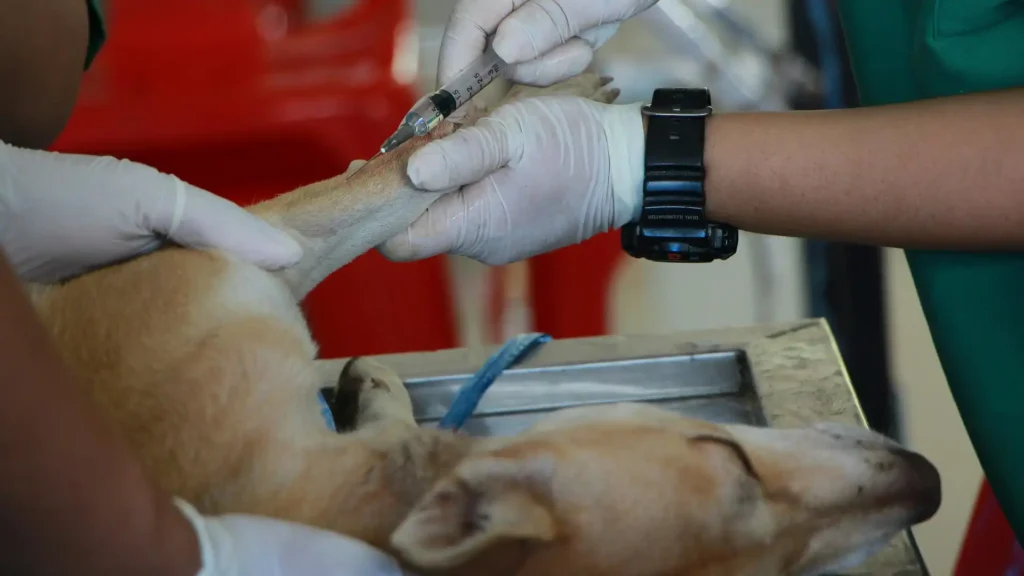Dogs bring joy, companionship, and endless energy to our lives, but they can also face unexpected health emergencies. From minor scrapes to life-threatening conditions like choking or heatstroke, knowing dog first aid basics equips owners to respond effectively. This guide delves into the benefits of mastering these skills, the serious risks of being unprepared, the core techniques every owner should know, and practical steps to learn and apply them.
Benefits of Knowing Dog First Aid Basics
Emergencies like choking, severe bleeding, and poisoning require immediate action. First aid knowledge allows you to stabilize your dog, potentially preventing fatal outcomes before veterinary care is available.
Prompt care for minor injuries, such as cleaning a cut or removing a splinter, reduces the risk of infection. For example, addressing a paw pad injury early can prevent abscesses.
Crises are chaotic, and panic can lead to mistakes. Familiarity with first aid techniques helps you stay composed. This ensures clear-headed decisions that prioritize your dog’s safety.
Handling minor issues at home, like treating superficial wounds or mild allergic reactions, can reduce the need for costly vet visits. This also minimizes stress for your dog by avoiding unnecessary trips.
Learning to care for your dog in emergencies deepens your understanding of their health and behavior, fostering trust and a stronger connection.
Your skills can extend beyond your pet. In a park or neighborhood, you could assist another dog in distress, earning gratitude from fellow owners.
Disadvantages of Not Knowing Dog First Aid
Without first aid knowledge, you may fail to recognize critical symptoms, such as subtle signs of bloat or poisoning, delaying life-saving care. Hesitation can turn treatable conditions into emergencies.
Improper handling, like moving a dog with a suspected fracture or forcing vomiting after ingesting a toxic substance, can cause severe harm. Lack of skills may also lead to overlooking internal issues, such as bleeding or shock.
Watching your dog suffer while feeling powerless is heartbreaking. The guilt of not knowing how to help can linger, especially if the outcome is poor due to inaction.
Untreated wound can escalate into infections or complications requiring surgery or extended treatment, leading to significant expenses.
Being unprepared can erode confidence in your ability to care for your dog, weakening the trust and connection built through shared experiences.
In a group setting, such as a dog park, you may be unable to assist another injured pet, missing a chance to make a difference in your community.
Dog First Aid Basics
Below are the essential first aid skills every dog owner should master, along with practical steps to apply them effectively:

Assessing Vital Signs
Locate the femoral artery on the inner thigh. Normal pulse rates vary by size: 60–120 beats per minute for medium to large dogs, 100–160 for small breeds. A weak or irregular pulse may indicate shock or heart issues.
Watch the chest or feel breath at the nose. Normal breathing is 10–30 breaths per minute at rest. Rapid, shallow, or labored breathing signals distress.
Use a pet-safe rectal thermometer lubricated with petroleum jelly. Normal is 100–102.5°F. Below 99°F suggests hypothermia; above 104°F indicates fever or heatstroke.
Press the gums gently; they should be pink and refill with color in 1–2 seconds. Pale, blue, or yellow gums indicate shock, oxygen deprivation, or liver issues.
Wound Care
Rinse cuts, scrapes, or punctures with clean water or saline to remove debris. Apply an antiseptic like chlorhexidine or povidone-iodine. Avoid hydrogen peroxide.
Control bleeding with a clean cloth or gauze, applying firm pressure for 3–5 minutes. Elevate the limb if possible.
Bandage lightly using non-stick gauze and vet wrap, ensuring it’s snug but not constricting. Check circulation by pressing the toe; it should blanch and refill quickly.
Seek veterinary care for wounds deeper than 1/4 inch, those with persistent bleeding, or any involving the eyes, chest, or abdomen.
Choking Response
Signs include pawing at the mouth, gagging, or difficulty breathing. Carefully open the mouth to check for objects, using a flashlight if needed. Avoid pushing objects deeper.
For small dogs, hold them upside down with the head lower than the body and apply gentle abdominal pressure. For large dogs, stand behind and perform a modified Heimlich maneuver.
If the obstruction doesn’t dislodge, rush to a vet while continuing gentle efforts if safe.
CPR for Dogs
Confirm no pulse or breathing before starting. Lay the dog on a firm surface, preferably on their right side.
For medium to large dogs, place hands over the widest part of the chest and compress 1–2 inches at a rate of 100–120 compressions per minute. For small dogs or puppies, use thumbs and lighter pressure.
If trained, give rescue breaths (one every 6 seconds) by closing the mouth and breathing into the nose until the chest rises. Use a barrier if concerned about hygiene.
Continue cycles of 30 compressions and two breaths until a vet takes over or the dog revives.
Handling Heatstroke
Symptoms include excessive panting, drooling, red gums, or collapse, often after exposure to heat or intense exercise. Breeds with short noses are especially vulnerable.
Move the dog to a shaded, cool area. Apply cool (not ice-cold) water to the body, focusing on the head, neck, and inner thighs. Use a fan to aid cooling.
Offer small sips of water but don’t force drinking. Monitor temperature; stop cooling if it drops below 103°F to avoid hypothermia.
Veterinary care is essential, as heatstroke can cause organ damage or swelling in the brain.
Poisoning Awareness
Common toxins include chocolate, grapes, antifreeze, rodenticides, and plants like lilies or sago palms. Symptoms range from vomiting and lethargy to seizures or collapse.
If you suspect poisoning, collect a sample of the substance or vomit if safe. Call a vet or the ASPCA Animal Poison Control Center (888-426-4435; fees may apply) immediately.
Do not induce vomiting unless instructed, as some substances can cause more harm. Activated charcoal may be recommended by a vet to limit absorption.
Seizure Management
Seizures may involve convulsions, drooling, and loss of consciousness, often due to epilepsy, toxins, or head trauma. Stay calm and time the seizure (most last 1–3 minutes).
Clear the area of hazards but don’t restrain the dog or put anything in their mouth. Dim lights and reduce noise to avoid stimulation.
After the seizure, keep the dog warm and quiet. Contact a vet immediately if it lasts over 5 minutes, occurs in clusters, or is the first seizure.
Fractures and Sprains
Signs include limping, swelling, or reluctance to move. Immobilize the limb with a makeshift splint to prevent further injury.
Avoid manipulating the limb excessively. Transport the dog to a vet carefully, supporting the injured area.
Ice packs wrapped in a cloth can reduce swelling for sprains, but fractures require X-rays and professional care.
Mastering dog first aid is a vital responsibility for every owner. The benefits far outweigh the effort required to learn these skills. Conversely, being unprepared risks delayed care, worsened injuries, and emotional strain, all of which can impact your dog’s health and your wallet. By learning essential techniques, building a first aid kit, and staying educated, you become your dog’s first line of defense.




